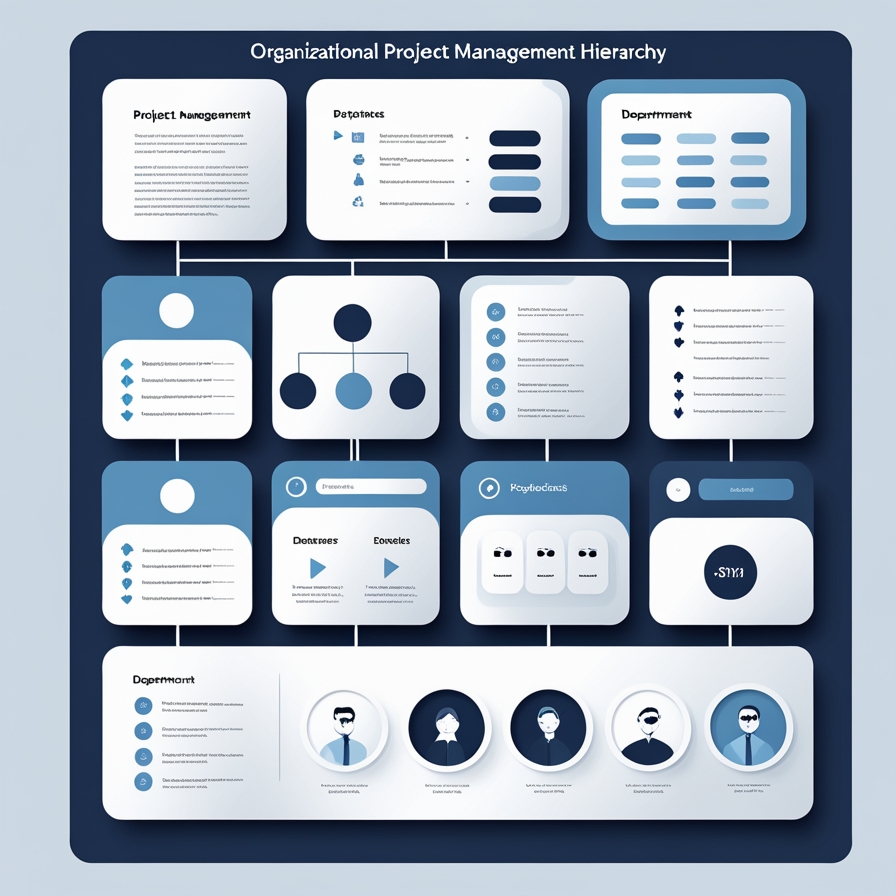Industry defines a hierarchical structure that aligns strategic objectives with execution, creating a cascade from organizational vision down to individual deliverables.
The Hierarchy (Top to Bottom)
Organization sits at the top, establishing the strategic vision, mission, and objectives. It encompasses all work across the enterprise.
Portfolio is a collection of programs, projects, and operational work grouped together to facilitate effective management and achieve strategic business objectives. Portfolios are not necessarily interdependent or directly related but are managed collectively to optimize resource allocation and strategic alignment.
Program is a group of related projects, subsidiary programs, and program activities managed in a coordinated manner to obtain benefits not available from managing them individually. Programs focus on interdependencies and achieving strategic benefits.
Project is a temporary endeavor undertaken to create a unique product, service, or result. Projects have defined beginnings and endings and deliver specific outputs that contribute to program or organizational objectives.
Component refers to individual projects or programs within a portfolio, or sub-projects within a larger project. It's the generic term for constituent parts at any level.
Key Relationships
Strategic Alignment: The hierarchy ensures work flows from strategy (portfolio level) through coordinated execution (program level) to tactical delivery (project level).
Benefit Realization: Organizations achieve strategic benefits through portfolios, which deliver them through programs, which obtain them through coordinated projects.
Governance: Each level has appropriate governance structures—organizational governance oversees portfolio management, which oversees program management, which oversees project management.
Resource Optimization: Portfolios balance resources across programs and projects, programs optimize resources across related projects, and projects manage resources for specific deliverables.
Interdependency Management: Programs manage interdependencies between related projects; portfolios manage the strategic balance between programs and standalone projects.
Key Concepts
Organization - The enterprise entity that establishes strategic direction, manages portfolios, and provides governance for all programs and projects.
Organizational Project Management (OPM) - A framework for aligning project, program, and portfolio management with organizational strategy to achieve business goals.
Portfolio - A collection of projects, programs, subsidiary portfolios, and operations managed as a group to achieve strategic objectives.
Portfolio Management - The centralized management of one or more portfolios to achieve strategic objectives, including identification, prioritization, authorization, and oversight.
Program - A group of related projects, subsidiary programs, and program activities managed in a coordinated way to obtain benefits not available from managing them individually.
Program Management - The application of knowledge, skills, and principles to achieve program objectives and obtain benefits not available from managing related projects individually.
Project - A temporary endeavor undertaken to create a unique product, service, or result with a defined beginning and end.
Project Management - The application of knowledge, skills, tools, and techniques to project activities to meet project requirements.
Component - Generic term for projects or programs within a portfolio, or constituent elements within a program or project.
Strategic Alignment - The process of ensuring portfolios, programs, and projects support and advance organizational strategy and objectives.
Benefit Realization - The outcome of actions, behaviors, products, services, or results that provide value to the organization and intended beneficiaries.
Governance - The framework by which an organization directs and controls its strategic objectives and monitors performance.
Portfolio Governance - The oversight function that ensures portfolio components align with strategy and deliver expected value.
Program Governance - The framework for decision-making, accountability, and oversight within a program to ensure benefit delivery.
Project Governance - The framework that provides direction and oversight for project decision-making to align with organizational objectives.
Operations - Ongoing work that sustains the organization and is generally repetitive and continuous, unlike projects.
Organizational Process Assets (OPAs) - Plans, processes, policies, procedures, and knowledge bases specific to and used by the performing organization.
Enterprise Environmental Factors (EEFs) - Conditions not under the immediate control of the team that influence, constrain, or direct the project, program, or portfolio.
Stakeholder - An individual, group, or organization that may affect, be affected by, or perceive itself to be affected by a decision, activity, or outcome.
Business Case - A documented economic feasibility study used to establish validity of benefits to be delivered by a project or program.
Benefits Management Plan - Document describing how and when the benefits of a program or project will be delivered and measured.
Roadmap - A chronological representation of a program's intended direction showing dependencies and relationships among components.
Value - The worth, importance, or usefulness of something; portfolios and programs focus on delivering strategic value to the organization.
Prioritization - The process of determining the relative importance of portfolios components to make decisions about resource allocation and sequencing.
Subsidiary - A component that exists within a larger entity (e.g., subsidiary programs within programs, sub-projects within projects).
Interdependency - A relationship where one project, program, or activity relies on or affects another within the same program or portfolio.
